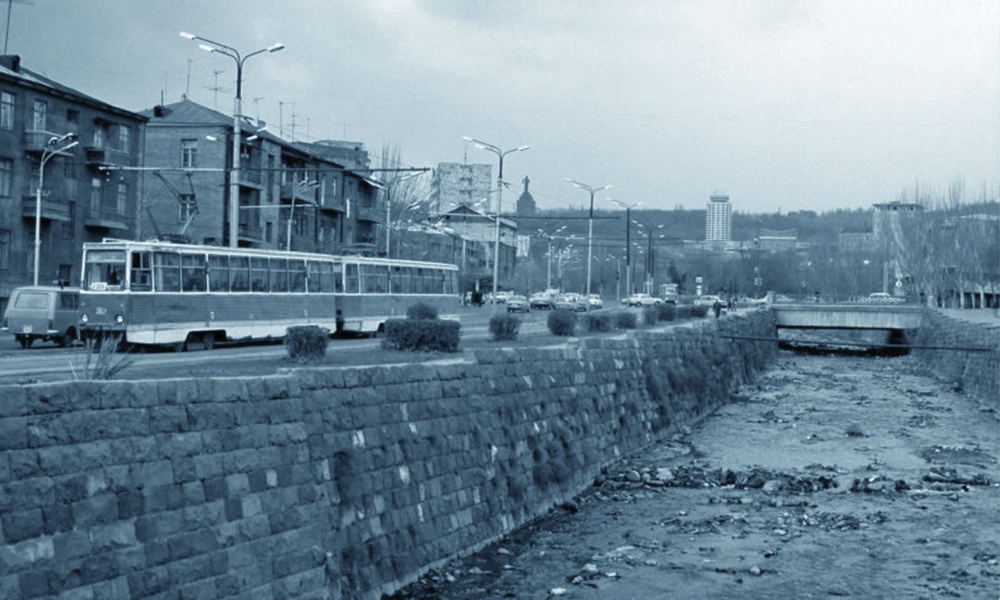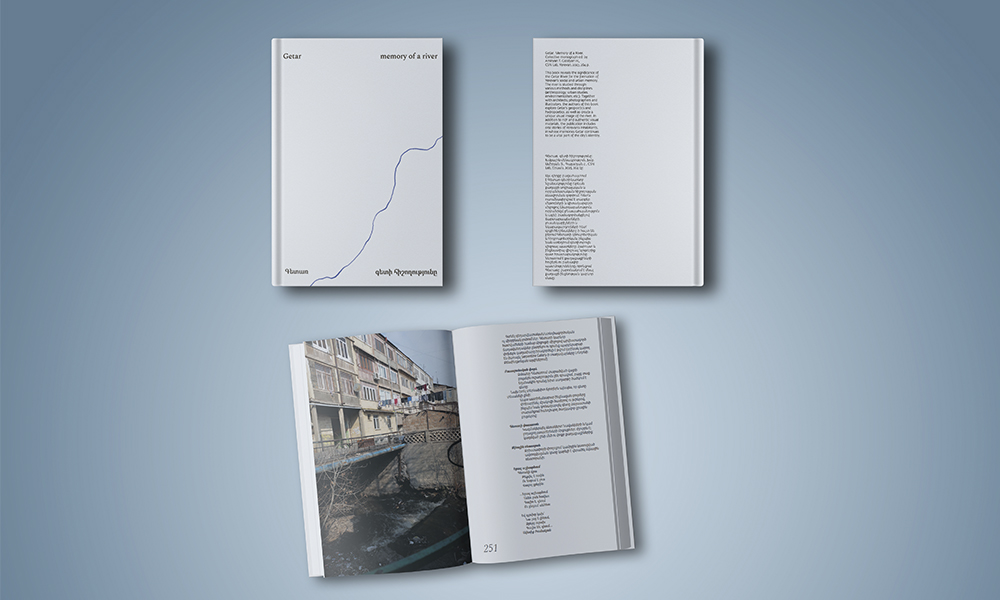The "Getar: Memory of a river" project is a cross-disciplinary research focused on exploring the river's importance in shaping the identity and collective memory of Yerevan and its residents. This project delves into various aspects, including urban planning, culture, anthropology, and the environment, to comprehensively understand the Getar River.
The "Memory of the River: Getar" project, undertaken by the "Cultural and Social Narratives Laboratory," started in 2021. Since then the team diligently worked for almost two years to delve into this extensive subject matter. The primary objective was to present the research findings to the public in a manner that is accessible and captivating, while also fostering, advocating, and popularizing the discourse on the interconnectedness and relations of urban planning, anthropology, culture, and the environment.

Flowing with Getar
Getar, which originates from the Geghama Mountains and flows through Yerevan, once played a significant role in the daily lives and routines of people. It gracefully crossed the Big and Small Centers of the city, finding its way through neighborhoods and gardens. The river held a distinct presence that became an integral part of the resident's identity. However, over time, it has been marginalized and gradually withdrawn from the city's landscape, disappearing from public view and appreciation. Most people have little to no awareness about the river's presence, let alone its significance and value, despite the fact that it is covered only partially.
Throughout time, Getar has been subjected to numerous pressures and challenges: from false narratives woven about the floods to distorted memories, changed bed, the decision to be partly covered, and being turned into a landfill.
Due to various factors, Getar has been subjected to subjugation and has gradually lost its acclaim as a river of crucial significance in terms of urban planning, ecology, cultural heritage, collective memory, and an important element of Yerevan's identity. Therefore, this research attempts to bring up the "underground" river and unveil its spirit.
The "Getar: Memory of a River" project served as a collaborative platform that united individuals from diverse fields such as cultural practitioners, anthropologists, environmentalists, biologists, urbanists, architects, visual artists, semiologists, archivists, and most importantly, the local residents who coexist with and hold a connection to the Getar River. This inclusive approach allowed for the sharing of experiences, knowledge, memories, concerns, and aspirations related to the river.
Throughout the project, the authors applied a range of research methods and practices, enabling them to gather, document, and synthesize diverse materials and sources. This comprehensive approach facilitated the creation of detailed studies, analyses, and visual materials, exploring key issues and topics that had previously remained untouched and undisclosed to the wider public.

“Getar: Memory of a River” addressed a number of topics and issues:
- The impact of the river on urban planning and development of Yerevan's environment,
- The role of the river in shaping the identities of the residents and their perception of the environment,
- The role of the river in the context of the formation of Yerevan's ecological environment: air purity, humidity, regulation of the city's climate, ensuring biodiversity, irrigation and other environmental aspects,
- The ambiguous presence and absence of the river in the urban life of Yerevan,
- The river's oblivion and insignificant annihilation from the urban environment, collective memory and sight,
- The river's cultural significance as an inspiring source for literary works and art, integral to the city's cultural life, and foundational in the creation of settlements, public spaces, and entertainment zones,
- The flooding of the river, which had disastrous consequences, contributed to the weaving of legends, false memories, and narratives, conflicting perceptions and approaches, and ultimately the making of problematic decisions that changed the course and fate of the river once and for all.
The "Getar: Memory of a River" project resulted in the development and publication of a book comprising analytical articles, exclusive visual materials, and maps.
The project integrated various academic methods and approaches: collecting oral stories through in-depth interviews, exploration of state and personal archival materials, implementation of field research involving measurements and mapping, extensive analysis of literature and other artistic disciplines in relation to the topic, environmental studies, collaboration with experts from diverse specializations, observations, and the crucial inclusion and analysis of the experiences of individuals residing in the regions near to the river Getar.
This is one of the CSN Lab’s research projects where intersecting thematic frameworks and concepts such as memory, anthropology, culture, urbanism, and environment are explored. Our objective is to stimulate public discourse and popularize the significance of environmental protection. By doing so, we aspire to enhance the awareness and consciousness of the general public about these pertinent matters. We seek active engagement of the society, transforming perceptions of one's environment into narrativization, and unveiling both the apparent and concealed layers of memory and identity.

The Project has been implemented by Cultural and Social Narratives Laboratory NGO within the “Civil Society Support for Ensuring Impact on Reforms” project. This material/production has been financed by the Swedish International Development Cooperation, SIDA. Responsibility for the content rests entirely with the creator. SIDA does not necessarily share expressed views and interpretations.
The “Civil Society Support for Ensuring Impact on Reforms” project implements by Eurasia Partnership Foundation with the support of the Swedish International Development Cooperation Agency, Sida.

